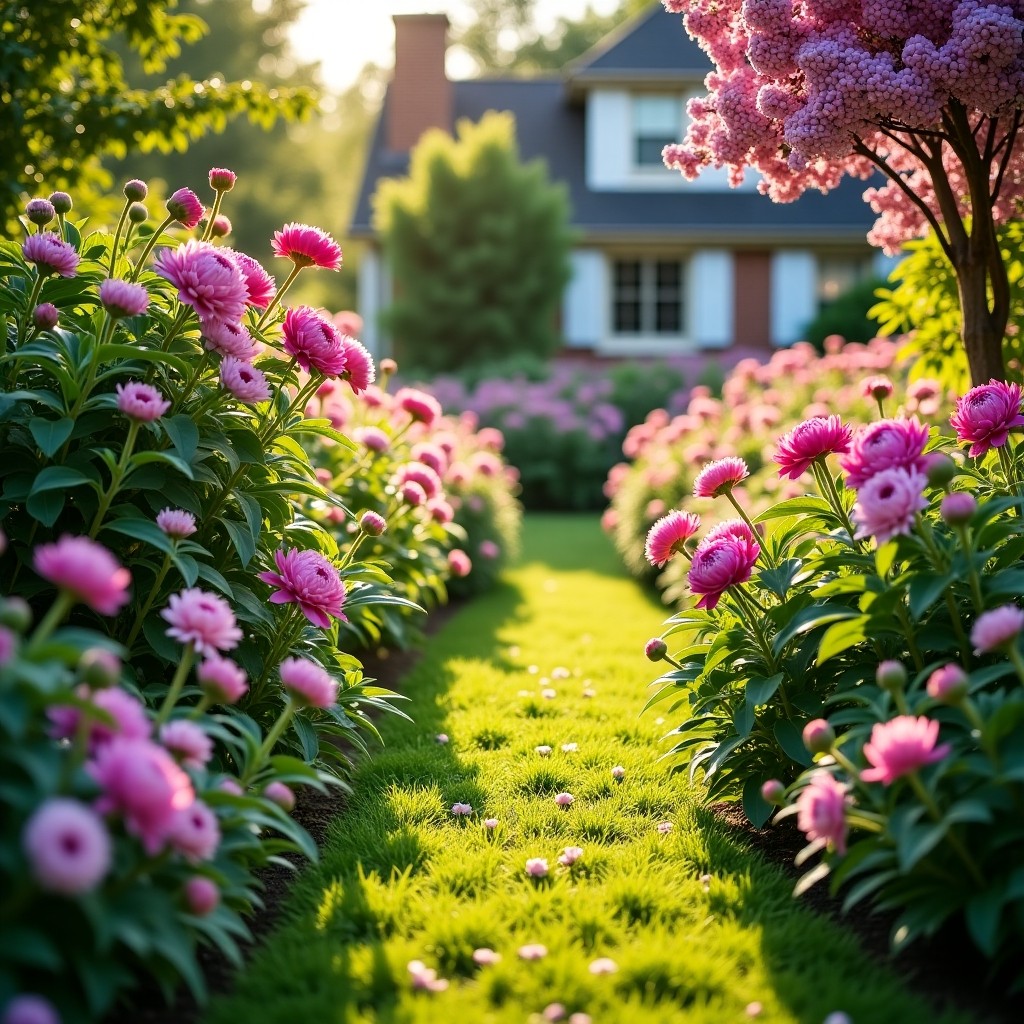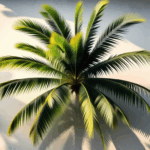Successful flower gardening hinges on a firm understanding of regional climates, which dictate the best planting times and practices for various blooms. Each region in the United States has its own unique climate attributes, affecting temperature, frost dates, and precipitation patterns. Recognizing these factors can vastly enhance your gardening success.
Climate zones are primarily defined by the USDA hardiness zones, which provide a planting guide based on the average annual minimum winter temperature. However, delving deeper into microclimates within these zones can give a more accurate picture of local conditions.
Microclimates are influenced by factors such as:
- Proximity to water bodies: Areas near lakes or oceans often have milder temperatures and longer growing seasons.
- Altitude: Higher altitudes can result in cooler temperatures and a shorter growing season.
- Urban environments: Cities may create heat islands, which can extend growing seasons compared to surrounding rural areas.
To effectively plan your flower gardens, it’s vital to not only understand your specific region’s climate but also to interpret seasonal tips that are customized for your locale. This ensures that you choose the right seeds and planting times for optimal bloom.
Here’s a quick comparison of different regional climates and their typical planting characteristics:
| Region | Climate Characteristics | Typical Planting Time |
| Northeast | Cold winters, humid summers, distinct seasonal changes | Late spring to early summer |
| Midwest | Varied climate, cold winters, warm summers | Late spring, after the last frost |
| Southern States | Mild winters, hot and humid summers | Late winter to early spring |
| West | Varied: from rain-heavy coastal areas to arid deserts | Varies greatly; often fall planting is preferred in certain areas |
Adapting to these climates involves selecting both native plants and those suited for your region’s weather patterns. This approach can minimize maintenance and maximize growth potential. Use regional climate insights to craft a strategic planting guide that complements the unique attributes of your area, ensuring your flower garden flourishes year after year.
planting in the northeast
Flower gardening in the Northeast requires careful planning due to its distinct seasonal changes, marked by cold winters and humid summers. Here’s a guide to navigate these conditions and enjoy a vibrant garden throughout the blooming season:
1. Know Your Last Frost Date:
– Start by identifying the average last frost date for your specific area. In the Northeast, this typically ranges from late April to early May, but local variations can occur.
– Use resources like the USDA planting guide or local extension services for precise frost dates to ensure you’re not planting too early.
2. Select Hardy Varieties:
– Choose plants that are resilient to the chilly start of spring. Consider perennials like peonies and daylilies, and annuals such as pansies and violas, which can tolerate cooler temperatures.
– Incorporate native plants that are naturally adapted to the local climate, requiring less maintenance and protection.
3. Prep Your Soil:
– As soon as the soil is workable, usually by mid-April, start preparing garden beds. This involves clearing debris, tilling the soil, and testing soil pH.
– Amending the soil with compost or organic matter can improve fertility and drainage, crucial for spring planting.
4. Stagger Planting for Continuous Blooms:
– Utilize seasonal tips by staggering plantings. Begin with cool-weather annuals and perennials in late April or early May.
– Follow with warm-weather favorites, such as zinnias and marigolds, after any risk of frost has passed in late May or early June.
5. Consider Microclimates:
– Evaluate microclimates in your yard. South-facing walls can offer warmer conditions, allowing for earlier planting but may require more watering.
– Use these warm spots to your advantage for early-blooming flowers or heat-loving varieties.
6. Monitor the Weather:
– Be vigilant about sudden weather changes typical in spring. Keep frost cloths or row covers handy for unexpected cold snaps.
– Pay attention to local weather forecasts and be prepared to protect young plants during late-season frosts.
7. Maintain Proper Watering:
– As temperatures rise, maintain consistent watering schedules, especially for newly planted flowers that are establishing roots.
– Use mulch to retain soil moisture and regulate temperature, keeping roots cool in the heights of summer.
By following this structured approach, the harshness of the Northeast climate can be well-managed, turning potential challenges into beautiful garden opportunities. Tailor these seasonal tips into your own planting guide to optimize the garden’s potential for success.
considerations for the midwest
Flower gardening in the Midwest presents its own unique set of challenges and opportunities, largely due to the region’s varied climate. Characterized by cold winters and warm to hot summers, with significant fluctuations, the Midwest requires a strategic approach to planting. To ensure a flourishing garden, it is vital to consider several essential factors.
Understanding the climate patterns is the first step. While the Midwest covers USDA Hardiness Zones 3 through 7, detailed knowledge of your specific subzone can greatly enhance your gardening efforts. This knowledge helps determine the right planting guide for your area. Typically, the best planting time in the Midwest is late spring, post the last frost, which can vary but usually ranges from mid-April in more southern areas to early June in the northern reaches.
One of the most important considerations when planting in this region is the seasonal tips about frost dates. The unpredictable nature of late-spring frosts requires vigilance; it’s essential to monitor weather forecasts closely. Keep materials such as frost cloths and row covers ready to protect young plants from unexpected cold snaps. This readiness is particularly crucial for areas closer to the Canadian border, where frost can occur even into early June.
Soil condition and preparation play a significant role in Midwest gardening success. The region’s soil ranges from heavy clay to sandy compositions. Testing soil pH and structure allows you to make necessary amendments, such as adding organic compost, which improves fertility and drainage. Preparing the ground as soon as it is workable in spring sets the foundation for healthy flower growth.
Plant selection also requires thoughtful consideration. Opting for hardy perennials and annuals that can withstand climate variability will increase gardening success. Coneflowers, black-eyed Susans, and hostas are excellent perennial choices that thrive in the Midwest’s conditions. For annuals, consider marigolds and sunflowers, which can handle both heat and occasional cold spells. Integrating native plants not only eases maintenance but also supports local ecosystems.
Moreover, acknowledging microclimates within your garden space can offer strategic advantages. South-facing gardens or areas sheltered from the wind can offer warmer microclimates, allowing for early planting of temperature-sensitive plants. Conversely, planting heat-tolerant flowers in more exposed areas can ensure they receive ample sunlight without overheating.
Regular maintenance is crucial. With varying precipitation patterns, consistent and efficient watering schedules become pivotal. Employing mulch helps retain soil moisture and regulate root temperature, which is essential during peak summer heat. Ensure sufficient watering particularly for newly planted blooms, giving them a strong start.
Finally, pest and disease management cannot be overlooked. The humid summer months can create conditions ripe for fungal diseases. Frequent inspection and maintaining space between plants for airflow will help mitigate these risks. Consider natural pest barriers and organic solutions to minimize the impact of common garden pests like aphids and beetles.
By integrating these flower gardening insights specific to the Midwest, you can cultivate a resilient and vibrant garden. Tailoring your approach to the unique aspects of the region ensures that, despite the climate challenges, you can enjoy a rich tapestry of blooms throughout the growing season.
timing for the southern states
Southern states offer a unique setting for flower gardening due to their characteristic mild winters and hot, humid summers. Taking into account these climatic conditions is essential for gardeners who want to maximize the success and beauty of their gardens. Timing, along with some well-chosen seasonal tips, can make all the difference in achieving a thriving bloom in southern climates.
In the southern states, the most conducive time for planting is typically from late winter to early spring. This timing leverages the region’s gentle winter conditions to give plants a head start before the onset of relentless summer heat. By starting to plant as early as late January in more southern parts like Florida or as late as March in states like North Carolina, you capitalize on the natural warmth and moisture that the region’s milder winter and early spring months provide.
Understanding your local frost dates is paramount. While the southern states benefit from extended growing seasons, knowing the average last frost date in your specific area helps you avoid cold damage to young plants. Many regions within the South experience their last frost between late February and early March, but this can vary, so consulting local gardening resources or extension services is advised.
Plant selection is crucial. Opt for flowering plants that are both heat and humidity tolerant to withstand the intense weather conditions during peak summer months. Varieties like lantanas, hibiscus, and marigolds are well-adapted to southern climates and can provide bright, continuous blooms throughout the growing season. Incorporating native species into your garden not only ensures better resilience to local conditions but also supports regional wildlife and biodiversity.
Soil preparation is another critical step in a successful planting guide for the South. The soil in many southern areas can be either sandy or clay-heavy, affecting drainage and nutrient availability. Enhancing your garden soil with organic matter such as compost or mulch improves both water retention and aeration, fostering better root development and plant health. It’s advisable to conduct a soil test to determine necessary amendments before planting.
Water management becomes particularly important as temperatures climb. Implementing efficient watering systems, such as drip irrigation, can ensure consistent hydration without over-watering, which is crucial given that dense humidity can lead to root rot and other fungal issues. Mulching not only conserves soil moisture but also helps moderate soil temperature, providing a buffer against the heat.
Additionally, attention to garden layout can help mitigate some climate challenges. Planting in areas that benefit from natural shade, such as near trees or buildings, can protect flowers from the harsh midday sun. Conversely, placing sun-loving varieties in non-shaded areas ensures they receive optimal light for full blooming potential.
Monitoring for pests and diseases is essential in southern gardens, where the warm, moist conditions can lead to increased pest activity and fungal diseases. Regular inspection and the application of organic pest controls or fungicides can help keep these threats at bay. Encouraging beneficial insects through companion planting can further enhance pest management naturally.
By keeping these guidelines in mind and adjusting your approach based on local experiences and observations, you can harness the favorable growing season of southern climates. With these strategies tailored to the unique attributes of the southern states, you can enjoy a continuously blooming and vibrant garden year-round, celebrating the rich potential of the region through thoughtful flower gardening.
best practices in the west
In the Western United States, flower gardening is as diverse as its landscapes, ranging from lush coastal areas to expansive arid deserts. The varied climates require an adaptable approach when it comes to selecting the best planting times and suitable flower varieties for your garden. To optimize success, a combination of understanding local climate nuances and implementing efficient gardening practices is essential.
The region’s weather patterns, which can fluctuate dramatically, significantly influence plant growth and the success of your garden. The coastal areas—known for their mild, wet winters and dry, temperate summers—demand a different planting strategy than the arid interiors, where dry conditions and extremes in temperature are common. It’s crucial for gardeners to assess their specific microclimates, whether they’re in the misty Pacific Northwest or the arid conditions of Nevada.
For coastal areas, the best planting time often aligns with fall and early spring, allowing plants to establish strong root systems during the cooler and rainier months before encountering the summer dry period. Selecting drought-resistant plants, like California poppies or lavender, ensures your garden thrives with less water during dry spells.
In desert regions, where summer temperatures can soar and water resources are limited, xeriscaping—landscaping designed specifically for drought resistance—is highly recommended. This approach involves utilizing native plants such as sagebrush and yucca that are well-adapted to arid conditions and minimal watering. Spring is typically the preferred planting season following the winter rains, which supply necessary moisture for seed germination and root development.
West gardeners should also take into account altitude, as it influences temperature and growing seasons. Higher elevations often experience a shorter, cooler growing season, requiring a selection of cold-tolerant varieties and a keen awareness of late spring and early fall frost dates. In these cases, starting seeds indoors or using cold frames to extend the season can be beneficial.
Water efficiency is a key practice throughout the West. Drip irrigation systems can reduce water waste and target specific garden areas, promoting healthy plant growth while conserving water. Mulch application is similarly effective, helping to retain soil moisture and regulate temperature, crucial for both high scorching temperatures and cooler nights.
For those in wildfire-prone areas, selecting fire-resistant plants such as succulents and prioritizing the maintenance of defensible space around your property is a necessary precaution. Proper garden layout, considering proximity to structures and creating firebreaks with gravel or lawn, contributes to both safety and sustainability.
Incorporating organic practices can further bolster the health of Western gardens. Employing natural pest control methods, encouraging beneficial insects, and avoiding chemical fertilizers help preserve the delicate balance of the region’s ecosystems. Regular soil testing and amendments support nutrient availability, addressing specific deficiencies that the varied Western soils may present.
By applying these targeted strategies, gardeners can embrace the varying climates of the West to their advantage. With thoughtful planning and attention to local environmental conditions, the potential for vibrant and sustainable flower gardening is truly expansive, yielding beautiful and thriving landscapes across this diverse region.
In conclusion, the key to successful flower gardening lies in understanding and adapting to the distinct climate conditions of each region. By tailoring your planting strategies to local weather patterns, selecting the right varieties, and employing efficient gardening practices, you can create stunning, resilient gardens. Embrace the unique characteristics of your region, and your garden will not only flourish but also enhance both your outdoor space and local biodiversity.










